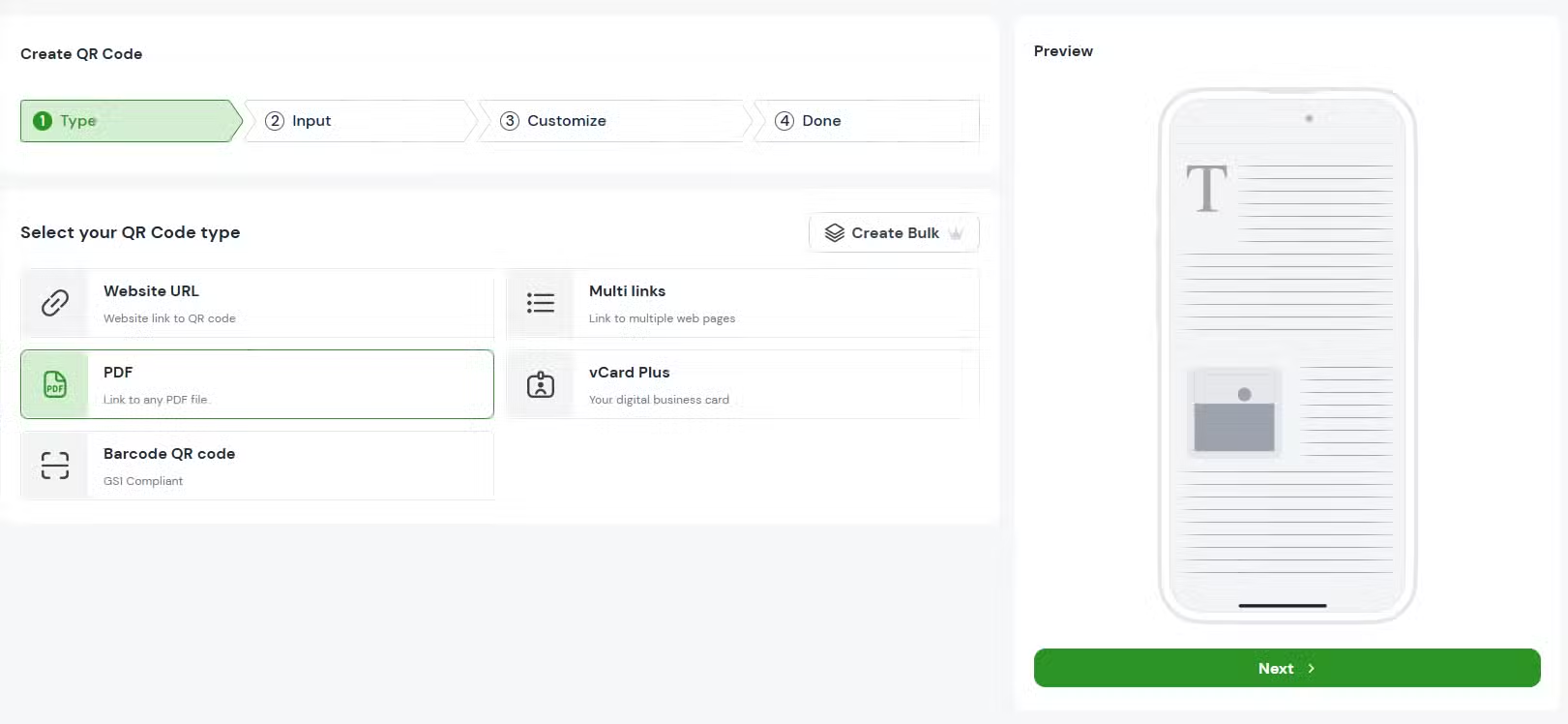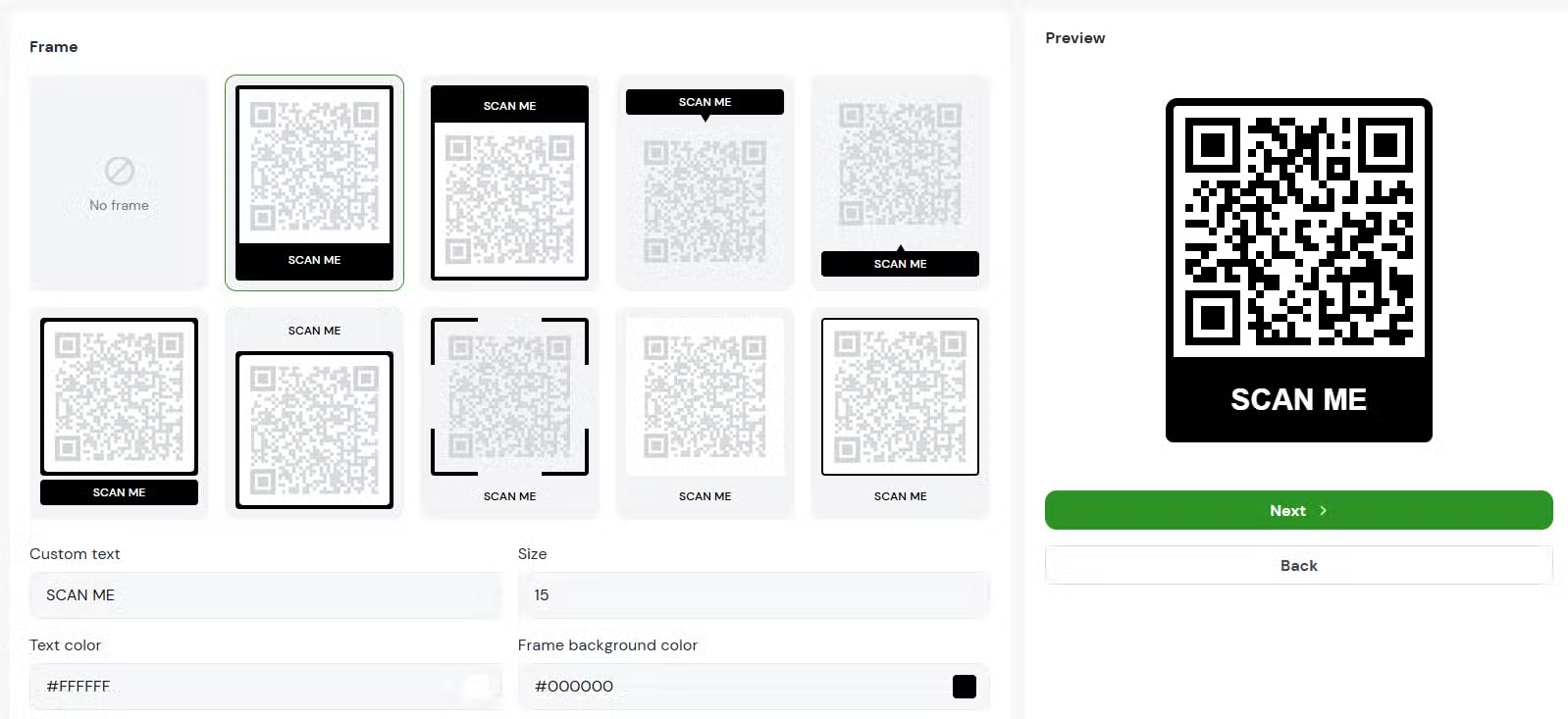Advantages of PDF QR Codes
Instant Access from Any Device
The most significant benefit of QR codes is their speed. All you have to do is scan the code with the smartphone camera, and voila! You see your document right away with any attachments or sign-ins.
Pro tip about how to make a QR code for a PDF:
- Ensure your PDF is optimized for mobile viewing with a clear layout, readable fonts, and a fast loading speed.
- If needed, compress the PDF to reduce the file size with a file shrinking tool online.
More Engaging and Professional
Making a perfect QR code on product packaging, or a digital screen makes your business look tech-savvy and intelligent. Plus, they help keep your materials clutter-free while providing instant access to important content at the same time.
Must-haves for how to create a QR code for a PDF:
- Customize QR codes with your branded colors and logo to make them look more professional.
- Use a shortened URL in the QR code to speed up the loading and avoid broken links. You can find a URL shortener for free online.
Eco-Friendly and Cost-Effective
Say goodbye to excessive printing! By using QR codes for PDFs, you can reduce waste and save money on printed materials, leading to a more sustainable business.
Sustainability tips:
- Make a QR code for a PDF for product instruction manuals to save paper that gets lost in storage.
- Share company materials with branded QR codes to save money on printing brochures that end up filling parking lots and bins with paper waste.
PDF QR Codes Use Cases
Here are just a few examples of why you should make a QR code for a PDF. Since PDFs can hold large amounts of information in a smaller space, saving on printed materials, and people take their mobile phones everywhere, it’s easier to create a QR code for a PDF so they can access the document at any time. For a full library of useful ideas, check out our link above!
Marketing & Advertising
Brochures & Flyers – Make a QR code for a brochure or flyer that leads to longer information on a PDF. This cuts down on the amount of prints to make, reducing waste.
Product Packaging – You can provide detailed product guides, instructional manuals, and safety tips in an organized, readable format instead of sending your customers to a separate website.
Posters & Billboards – A PDF QR code can route to a storable PDF with details of events, products and services, and other materials, eliminating the need to cram more text into a limited space that will be forgotten later on.
Business & Corporate Use
Business Cards – A PDF can hold more content such as portfolios, digital pamphlets, and service menus. This is memorable and helps you retain brand recognition, which is difficult to do via a webpage that may have distractions.
Presentations & Reports – PDFs ensure charts, graphs, and formatting remain intact, avoiding issues that may arise with web page loading or layout inconsistencies. Since they can be studied offline, there’s no need for an internet connection in a place like a plane or subway.
Internal communications – Employees can download corporate handbooks, policies, or training materials to access offline. Unlike the persistent dependence on a webpage, PDFs won’t demand an internet connection after saving.
Education & Training
E-books & Study Materials – PDFs preserve the document’s integrity, including annotations and interactive components, such as hyperlinks and bookmarks.
Course Outlines & Schedules – Students can download PDFs to access their syllabus anytime, with consistent information across every platform.
Event & Webinar Materials — Attendees can easily save and reference the keynotes, slides, and certificates without going to a website every time they want to check.
Healthcare & Medical
Patient Information — A PDF QR code allows healthcare professionals to provide detailed aftercare instructions that can be printed out and annotated or saved to the patient’s device.
Medical Research & Reports – Unlike a webpage, a PDF ensures research papers maintain their original formatting, footnotes, and citations.
Hospital Forms & Policies — Use a QR code instead of asking patients to complete them in person, taking users to downloadable, printable, PDF versions all in one place.
Retail & E-commerce
Receipts & Invoices – Unlike a web link that can be outdated, PDFs provide a structured layout, ensuring legally compliant digital receipts.
Coupons & Discounts – Users can use and save discount coupons on their mobiles if they want to or print them if needed. Unlike a webpage, a PDF prevents accidental format changes.
Events & Hospitality
Menus & Price Lists – Restaurants and hotels can update their PDF menus without printing new ones while keeping the layout consistent across different devices.
Tickets & Invitations – Unlike a website that might require logging in, a PDF QR code lets guests download and save their tickets for easy access.
Travel Guides & Maps – Tourists can scan a QR code to download a PDF travel itinerary, local maps, or emergency contacts at no data cost.
Legal & Real Estate
Contracts & Agreements – The legality of signed documents is maintained in PDFs, which can also be password-protected for added security.
Property Listings – Potential buyers can download property brochures with images, floor plans, and legal details in a format that doesn’t change across different devices.
Government Forms & Permits – Rather than wading through a complex government website, individuals can get the official forms at the snap of a QR code.
How to Make a QR Code for a PDF
Creating PDF QR codes is an easy task with a QR code generator like Trueqrcode. It ensures:
- QR code generation that is quick and secure.
- QR codes never expire—you can use them forever!
- Customizable QR codes to meet branding requirements.
- High-resolution QR codes for print or digital use.
- QR code analytics to monitor user engagement.
Step 1: Prepare Your PDF
Adjust the file size. Large files can increase loading time and take up storage space, which can frustrate users. Use a file shrinking tool to decrease the size while keeping the quality. Open the new file to ensure it is easily readable.
Make sure the PDF is mobile-optimized since users scan QR codes from their phones.
Enrich your content. If you have images or infographics on the PDF, use alt text to ensure that persons with disabilities can access them.
Step 2: Go to Trueqrcode PDF QR Code Generator
Visit Trueqrcode’s PDF QR Code Generator and choose the PDF type to create a QR code.

Step 3: Upload the File
Next, use Trueqrcode’s upload features to save the document and get a PDF QR code in one go. Drag the PDF file or add it from the computer.
Step 4: Customize Your QR Code
We provide multiple customization options for QR code creators to make the code eye-catching by adding their branded colors, logo integration, and providing different design patterns.

Step 5: Create and Save the QR Code
Click on the ‘Confirm and Save’ button to download the PDF QR code. Choose from QR code file formats such as:
PNG (Best for web and presentations)
SVG (Ideal for high-resolution print media)

Step 6: Test Your QR Code – a Must!
Before you print and distribute the QR code, scan it with multiple devices and QR scanners to verify:
- There are no errors in the link.
- The PDF files load quickly and display properly when viewed on different screen sizes.
- There are no accessibility issues preventing users from viewing the document.
Step 7: Distribute and Track Performance
Trueqrcode also offers QR code analytics, allowing you to track performance by measuring user engagement, so you can optimize your QR code strategy accordingly. Monitor key QR code metrics such as the number of scans, date, time, and place.